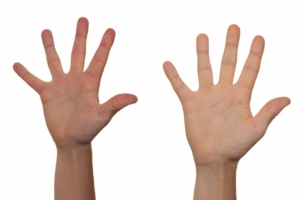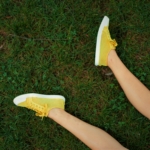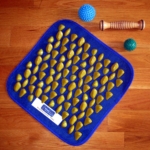Reflexology 101
Reflexology reduces stress (a major contributing factor to disease), enhances the body’s ability to heal itself, and balances both body and soul. Research shows that a single reflexology session can create relaxation, reduce anxiety, diminish pain, improve blood flow and decrease high blood pressure.
Getting reflexology sessions can be a valuable addition to your wellness. But what exactly is reflexology and what are some self-help techniques you can try for yourself?
What is Reflexology?
Reflexology is based on the idea that a map of the body is reflected on the hands and feet, and by applying alternating pressure to specific points on the hands and feet you can affect various organs and parts of the body.
Reflexology balances the nervous system by stimulating the nerve endings of the feet, which connect with the spinal nerves and their corresponding organs. It works with the circulatory system, breaking up congestion and deposits in the feet, which in turn help detoxify the body.
Numerous studies have shown that reflexology is able to help:
- promote balance and normalization of the body’s functions
- reduce stress and bring about relaxation
- improve circulation and delivery of oxygen and nutrients to the cells throughout the body
There are two major factors that set reflexology apart from other therapies. The first is that it’s an all-encompassing treatment. All organs, glands, and the skeletal system can be stimulated through the feet and hands. (In other words, it’s very efficient!)
The second is the personalized self-help reflex exercises that can be done at home between sessions. These exercises only take a minute or two a day, and the results are often impressive.
How Can Reflexology Help Me?
Although as a professional reflexologist I never diagnosed or prescribed, in my experience, clients have found reflexology helpful in dealing with back/shoulder/neck pain, all things reproductive (PMS, fertility, prenatal, menopause), digestive issues, depression/anxiety, and insomnia, to name a few.
In addition to my private practice, I previously worked with patients at the Initiative for Women with Disabilities (IWD) at NYU Medical’s Hospital for Joint Diseases. Many of the patients I saw were dealing with issues such as chronic pain, fibromyalgia, multiple sclerosis, cerebral palsy, and rheumatoid arthritis, and found reflexology a beneficial way to incorporate integrative therapies into their treatment.
Is there any evidence, or scientific studies, that support the effectiveness of reflexology?
In 1991, the first U.S. reflexology study published in a scientific peer reviewed medical journal, Journal of Obstetrics and Gynecology, studied the effects of reflexology on PMS. The double blind study showed a 47% reduction in symptoms, not including placebo effect.
More recently, based on the success of an initial grant, the National Center on Complementary and Alternative Medicine (NCCAM) awarded a second round of funding ($10 million) to Michigan State University to continue studying the impact of reflexology on women undergoing chemotherapy for stage 3 and 4 breast cancer.
While reflexology is much more widespread in other countries, it’s increasingly being used in wellness programs and cancer treatment centers in hospitals and medical facilities throughout the U.S.
Any advice/tips for someone considering reflexology for the first time?
Always make sure the reflexologist you’re considering is certified by The American Reflexology Certification Board (ARCB). They have rigorous testing to become certified, and it’s the gold standard in the field of reflexology in the United States.
I recommend trying more than one session, because reflexology has cumulative benefits. It’s important the client assesses if this is working for them or not. Depending on the issue or health challenge, I often suggest at least three sessions close together (every week or two weeks) and then evaluate initial results. Remember, acute conditions tend to balance faster than chronic ones. In other words, the longer you’ve had the issue, the longer it usually takes to get rid of it.
How can I find a certified reflexologist?
Check with the ARCB or your state reflexology association by researching online or calling.
What self-help reflexology techniques can I use?
Here’s the clip with Dr. Oz:
5 Secrets in the Palm of Your Hand
Here’s a DIY Guide so you can use the reflexology techniques I shared with Dr. Oz:
While the majority of people tend to get professional reflexology sessions for their feet, the hands can be just as effective. In the self-help reflexology segment I did on the show, I explained what to look for on your palms to get to know your own body better. Here’s a recap for you to try for yourself. Of course, this is not a substitute for medical care, always be sure to consult with the appropriate health practitioner in case of any medical condition.
1.Digestion: Intestines Reflex
I see a lot of clients with digestive issues, so this is one of my favorite self-help tips: the Million-Dollar Golf Ball Technique created by leading reflexologists Barbara and Kevin Kunz. This technique helps regulate and support your digestion.
- Interlock fingers.
- Roll the ball around the lower area of the palms, or heels of the hands.
- This corresponds to the digestive reflexes for the small and large intestines.
- You might notice the area feels a little crunchy or bumpy if you have digestive issues.
- Do this daily for a minute once or twice a week for 2 weeks, and then as needed.
2. Insomnia: Pituitary Gland Reflex
This is a great technique if you have trouble sleeping. The pituitary gland is like the master conductor of the orchestra; it oversees the entire endocrine system, so this is a really important point to help the body balance itself.
- Find the middle of the whorl of your thumbprint.
- This is the reflex for the pituitary gland.
- Take the side of the nail of the other thumb, and press it into the center of the whorl of the thumbprint and hold.
- Good metaphors to let you know you found the right spot:
- It might feel like a little metal ball under the skin,
- Or it might feel like you stuck a needle in your thumb.
- It might feel more sensitive if you’ve had trouble sleeping.
- You can do this in the middle of the night if you wake up and have trouble getting back to sleep.
- Do both thumbs holding each for 45 seconds, 2 or 3 times a day.
3. Colds & Flu: Head & Sinuses Reflexes
This is great for any kind of congestion and often helps immediately.
- The fingers are the reflexes for the head and sinuses.
- Press and rub from the base of each finger to the tip.
- If you’re congested, your fingers might feel a little tight or puffy as you get to the tips.
- Do this on each finger on both hands a few times, 3-4 times a day, or as needed.
4. Back Pain: Spine Reflex
With back pain, it’s hard to find things you can do yourself to help alleviate it, so this one is also a favorite. It’s quick and easy.
- The side of the thumb down to the wrist is the spine reflex.
- Press with the flat of the opposite thumb, inching along from the top of the thumb down to the wrist.
- For professional reflexologists we use a special thumb-walking technique, but it works regardless.
- It might feel tender in some areas if you’re experiencing back pain.
- Spend more time on tender areas, but you don’t need to apply a lot of pressure if it hurts.
- It works regardless. No pain no gain doesn’t apply with reflexology!
- Do this on both hands, go down this area 3 or 4 times, 3 or 4 times a day.
5. Low Libido: Ovaries & Uterus Reflexes
This technique is called the Wrist Twist and was created by a reflexologist in the U.K., Lynne Booth.
- The reflexes for the ovaries and uterus are on the sides of the wrist.
- Grasp your wrist with your thumb and forefinger forming a circle.
- Twist the opposite hand.
- This also applies to men—instead of ovaries and the uterus reflexes, you are targeting the prostate and testes.
- Clients often report feeling invigorated and energized immediately.
- Twist your wrist 20 times or so and then do the opposite wrist, 2 or 3 times a day.
I often tell my clients that they can do all of these techniques as a general tune-up between sessions as a way to prolong the effects of their session or to see faster results. Many clients report feeling energized and relaxed with all of these techniques. It’s a quick and easy way to interrupt stress.
Here are the Best DIY Reflexology Gadgets I’ve found.
And a YouTube Playlist of DIY Reflexology.
Need support?
I work with clients all over the world using an intuitive combination of Tao Hands, Distance Reiki, Virtual Hypnosis, and flower essences. Book a session for general wellness and stress relief, or if you could use support with a particular challenge. Or join us for monthly virtual Soul Healing Events or download Soul Healing Recordings around popular themes/topics.














